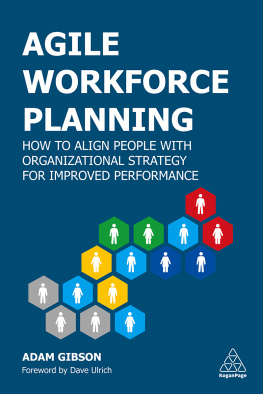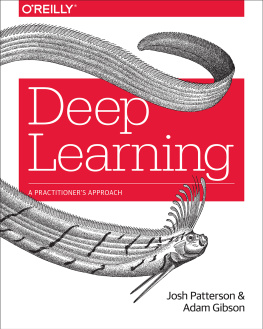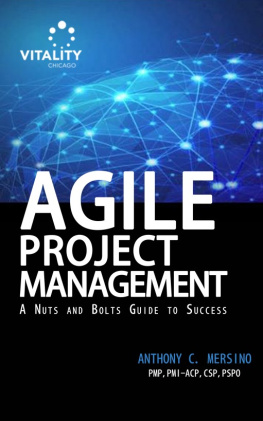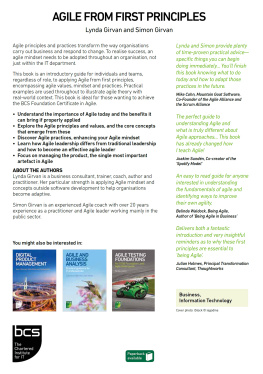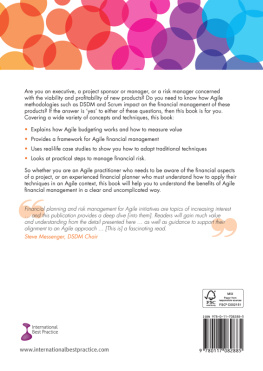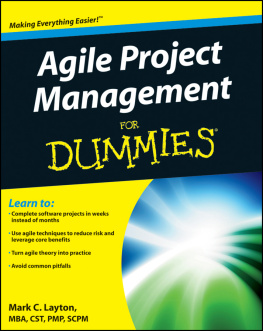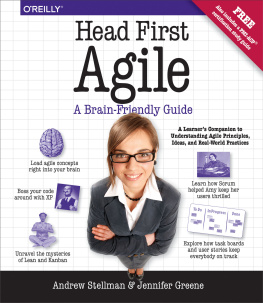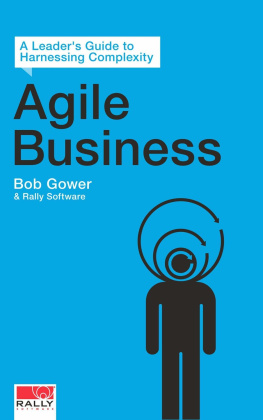Gibson Adam - Agile Workforce Planning
Here you can read online Gibson Adam - Agile Workforce Planning full text of the book (entire story) in english for free. Download pdf and epub, get meaning, cover and reviews about this ebook. year: 2021, publisher: Kogan Page, Limited, genre: Business. Description of the work, (preface) as well as reviews are available. Best literature library LitArk.com created for fans of good reading and offers a wide selection of genres:
Romance novel
Science fiction
Adventure
Detective
Science
History
Home and family
Prose
Art
Politics
Computer
Non-fiction
Religion
Business
Children
Humor
Choose a favorite category and find really read worthwhile books. Enjoy immersion in the world of imagination, feel the emotions of the characters or learn something new for yourself, make an fascinating discovery.
- Book:Agile Workforce Planning
- Author:
- Publisher:Kogan Page, Limited
- Genre:
- Year:2021
- Rating:3 / 5
- Favourites:Add to favourites
- Your mark:
- 60
- 1
- 2
- 3
- 4
- 5
Agile Workforce Planning: summary, description and annotation
We offer to read an annotation, description, summary or preface (depends on what the author of the book "Agile Workforce Planning" wrote himself). If you haven't found the necessary information about the book — write in the comments, we will try to find it.
Agile Workforce Planning — read online for free the complete book (whole text) full work
Below is the text of the book, divided by pages. System saving the place of the last page read, allows you to conveniently read the book "Agile Workforce Planning" online for free, without having to search again every time where you left off. Put a bookmark, and you can go to the page where you finished reading at any time.
Font size:
Interval:
Bookmark:
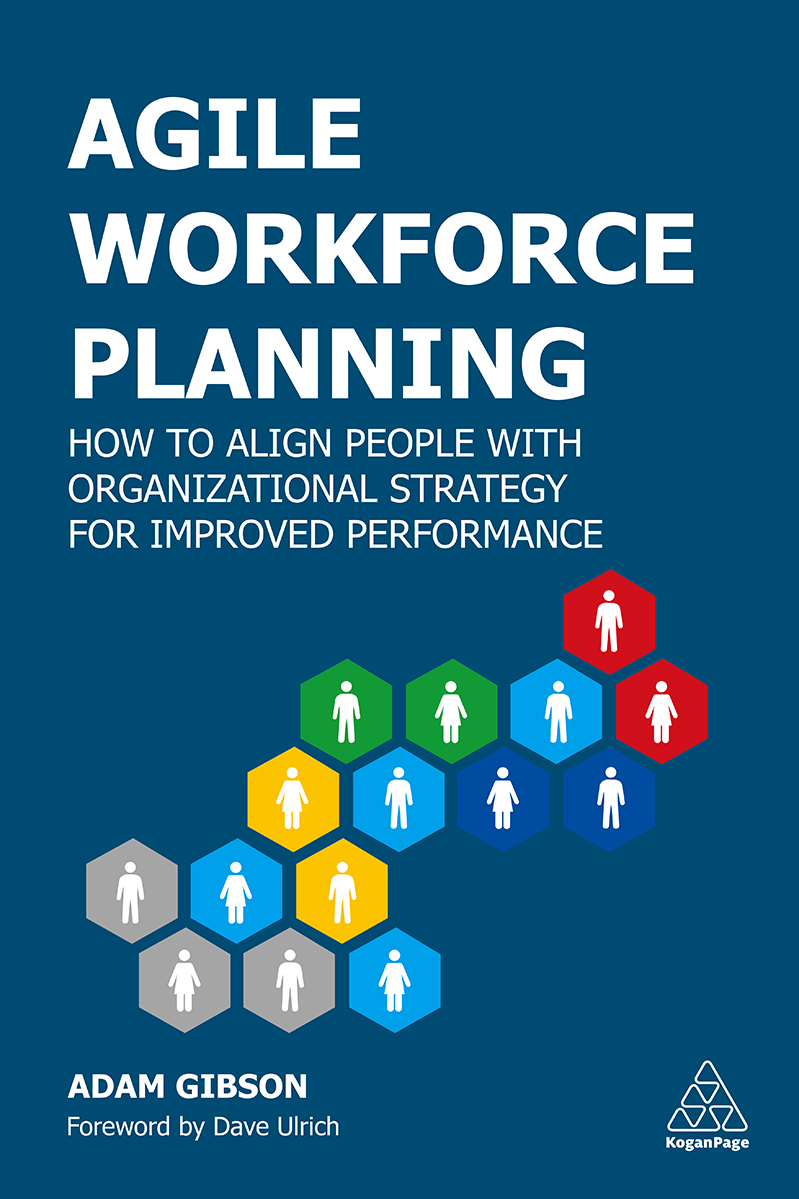
How to align people with organizational strategy for improved performance
Adam Gibson

For Katy and Thomas
Adam Gibson is a global leader in workforce planning, creator of the Agile Workforce Planning methodology and a popular keynote speaker. Having successfully implemented and transformed workforce planning and analytics in businesses across multiple industries, he continues to advise company executives on how to create a sustainable workforce that increases productivity and reduces cost. Now a consultant in the professional services, has held senior roles in workforce planning, workforce analytics and talent management in a number of prominent public and private sector organizations. Prior to his current career in business, he served in the British Army as a commissioned officer in the infantry; he deployed on multiple operational tours, serving on the front lines of Afghanistan and Iraq, and received the Joint Commanders Commendation in the 2007 Operational Honours and Awards.
Adam is Founder and Director of Agile Workforce Planning Ltd and leader of the Strategic Workforce Planning Faculty of the Chartered Institute of Personnel and Development (CIPD). He holds a Bachelor of Arts degree (with Honours) in Politics from the University of Sheffield and a Post-Graduate Diploma in Strategic Management and Leadership from Stratford Business School. He is a Chartered Fellow of the Chartered Institute of Personnel and Development (Chartered FCIPD) and a Fellow of the Chartered Management Institute (FCMI).
In a recent television interview, the guest was asked about some unexpected current event and what it meant. With a sly grin, the guest simply responded Its 2020! The year 2020 may become a meme for unparalleled change with cumulative calamities:
Global coronavirus pandemic affecting 7 billion people on earth with nearly 40 million infected and over one million deaths
Racial and civil unrest reflected in Black Lives Matter protests and movement
Global immigration, refugee and humanitarian challenges
Natural disasters of fires, earthquakes, hurricanes, floods and even locusts
Economic decline in many industries
Political squabbles and diatribes
Personal and emotional malaise with increased rates of anxiety and stress and decreased rates of well-being
Whew! Some have said it is time to apply the neuralyzer from Men in Black and erase the year 2020.
Of course, we cannot erase 2020, or even pretend it did not exist.
Individuals and organizations need to learn to not merely survive, tolerate, or endure the uncertainty that these crises create, but to harness the uncertainty and find opportunities in it.
The good fortune for individuals and organizations is that there has been a lot of focus the last few years around creating agility. Agility, or the capacity to anticipate and respond quickly, has become a key concept to help both individuals cope with change and organizations harness uncertainty. Clearly agility matters in this unprecedented 2020 world.
In our work, we have defined laid out a roadmap for agility (). This roadmap has three fours: (1) four dimensions to define agility (create a future, anticipate opportunity, adapt quickly, learn always; (2) four stakeholders where agility applies (strategy, organization, leader, and individual); (3) four HR practices to drive agility (people, performance, communication, work). This overview of agility offers leaders a blueprint to build a learning organization that can adapt to what is not yet known.
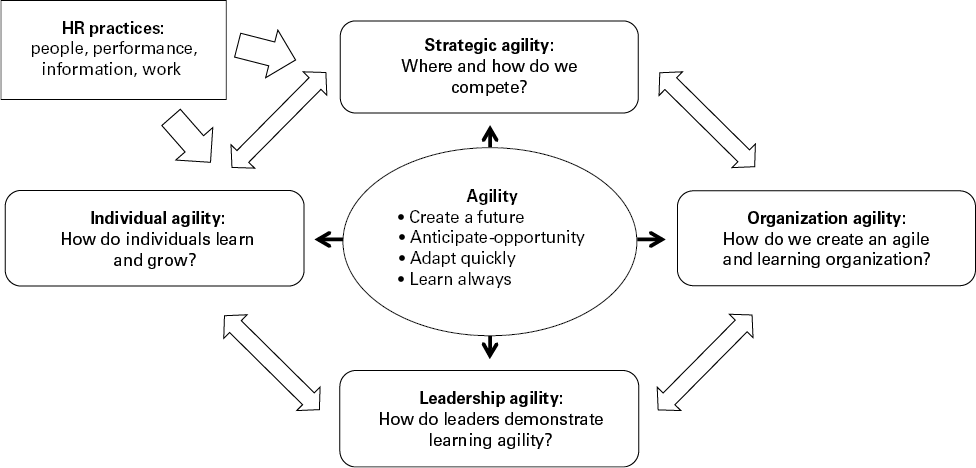
At the center of the model is a label Agility which reads as follows:
Create a future
Anticipate opportunity
Adapt quickly
Learn always
Arrows point up, down, left, and right to model components which read clockwise from the top as follows:
Strategic agility: where and how do we compete?
Organization agility: How to we create an agile and learning organization?
Leadership agility: How do leaders demonstrate learning agility?
Individual agility: How do individuals learn and grow?
The components have double-ended arrows between each pair of labels. At the upper left and pointing to individual and strategic agility is a final component labeled as follows: H R practices: people, performance, information, work.
For agility to become a central capability and element of an organizations culture, individuals have to become nimble, deft, and change-able. To ensure individual agility, an organization needs to create a more agile workforce planning process.
Adam Gibsons ideas in this book offer unique and relevant guidance for creating this agile workforce planning process. His work does a superb job capturing and synthesizing the rich and diverse literature on workforce planning so that the seven rights of workforce planning can occur: shape, size, location, time, cost, risk, and capability.
His framework with six stages for doing agile workforce planning (baseline, supply, demand, gap analysis, action plan, deliver) are relevant, timely and useful. For each of these six stages, he provides conceptual insights, useful tools and specific actions that will enable a business or HR leader to make agile workforce planning happen.
With the ideas and insights in this book, the threats and fears of 2020 may be replaced with opportunity and confidence in how to better manage talent in times of uncertainty.
Dave Ulrich
Rensis Likert Professor
Ross School of Business
University of Michigan Partner
The RBL Group
Throughout my younger years I was fascinated by history. Perhaps it was the study, on three separate occasions (such was British education in the 1990s), of German history between the two world wars that drove my interest in political history. I was interested in the romantic and utopian notions of an ideal state of politics and of duty, espoused by Plato and Aristotle, concepts that would lead me into military service. Equally, I had an interest in realpolitik, the way things are, characterized by the likes of Thomas Hobbes and Niccol Machiavelli. My career in the army was similarly demarcated: enemies were fought, and hearts and minds won, through realpolitik; however, the conduct of the army was based on duty. I recall being on parade, early in my service, and we were addressed by a senior officer: do what you ought, not what you want. It was a phrase that stuck with me as all of us were directed through the use of terms such as should, will and must. They were phrases that worked; the military acted on those terms and were punished when they failed.
When I left the military, I found that much of the civilian world used the same phraseology: managers said that people should, processes said that people will, and leaders said that
Font size:
Interval:
Bookmark:
Similar books «Agile Workforce Planning»
Look at similar books to Agile Workforce Planning. We have selected literature similar in name and meaning in the hope of providing readers with more options to find new, interesting, not yet read works.
Discussion, reviews of the book Agile Workforce Planning and just readers' own opinions. Leave your comments, write what you think about the work, its meaning or the main characters. Specify what exactly you liked and what you didn't like, and why you think so.

